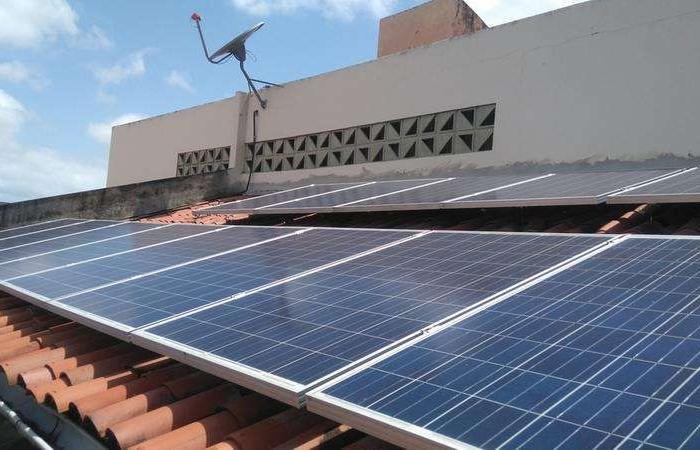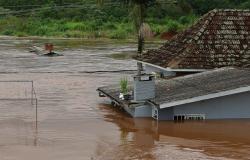
It has never been so cheap to invest in solar energy systems for residential and small commercial consumers throughout the Brazil. Only in January 2024, the price reduction in components that generate electricity from photovoltaic panels was 30% compared to the same period last year.
The numbers are released in an adverse context for the sector. Since January 1st, the tax collection for solar panels and also the so-called “Sun tax”, which has been in force since the beginning of 2023.
The two charges, made progressively until 2029, aim to control the segment and stimulate the renewable energy equipment production industry in Brazil, since several photovoltaic energy components are imported, especially from China.
The price reduction was the highlight of the GD Strategic Studyfrom the Greener Consulting. According to the company, the main reason for the drop in values is related to “module“, being the technical term to designate the solar panels.
“(It) represents 25% to 40% of the final price of a photovoltaic (PV) system currently. This drop in the prices of PV systems reflects in greater investment attractiveness to the final consumer from the point of view of return on investment, which has improved by 25% in the case of a residential PV system”, points out Greener.
Return on investment
The so-called “return on investment” is defined by a ratio between the period that the customer invests in the acquisition and installation of a photovoltaic system and how long this amount is paid, that is, the time it takes for the panel to pay for itself and continue generating benefits for the consumer.
According to Greener, in January 2023, a consumer who decided to purchase a solar system would take 4.4 years (until mid-2027) to pay off the investment, compared to 3.3 years in 2024. It is worth remembering that the average duration of a photovoltaic equipment is around 20 years, which may extend depending on the context.
Verticalization of companies in China appears as the main factor
The commercial director of I’m Energy, Mario Viana, has already highlighted that more than 80% of distributed solar energy generation in the country comes from residential systems, which include, in addition to houses, small commercial establishments. In addition to greater demand from this audience, supply also soared throughout the second half of 2023 and the beginning of 2024.
Instead of chain production, with several companies producing each of the components of the solar panels, many Chinese companies, which manufacture photovoltaic panels, decided to “verticalize”, that is, to participate from the beginning of the transformation of the raw material to the delivery of the final product.
According to Mário Viana, “the value of panels melted throughout 2023”, and even with taxes pushing the increase in figures for photovoltaic systems, the drop in imported products was greater than expected, making the acquisition of materials even more accessible.
“You have the company that extracts the silicon and manufactures the ingots, you have the company that transforms this silicon into a wafer, which is then transformed into a cell, which will then be assembled into the panel. The chain had major players at each stage of these, and a large player decided to go vertical. He was already the largest silicon supplier in China, and decided to verticalize his production down to the panel level. Some companies that also did not manufacture panels, but manufactured wafers, also decided to go vertical,” he explains.
From one year to the next, the supply of panels in China increased absurdly, and Chinese domestic consumption did not follow the same evolution, and external consumption in the world also did not evolve in the same way. It happened that factories with gigantic stocks, having to release them, caused prices to fall by around 60% from the beginning to the end of last year.Mario Viana
Commercial Director at Sou Energy
China and Europe with plenty of equipment
The high supply of solar panels has a cascading consequence, which affects the European market, another major commercial partner for Brazil. With the energy transition and greater demand, China is producing photovoltaic materials far beyond what is needed, and the surplus is already used in Europe as fences for houses and commercial establishments.
The impact is also felt in the Ceará market. According to Danilo Pinhocommercial director of 55 Energysolar system panel prices became around 50% cheaper for consumers in less than two years, despite taxation in recent months.
“Europe has countless modules stopped and they are not being able to provide flow. This contributed to reducing prices for the end customer. It is a combination of factors, since I will have to pay for wire B now, the price of the equipment has fallen by account of market situations, and the high competitiveness of equipment in the Chinese market”, he observes.
The company director’s perception also brings the projection that the drop in equipment prices, despite China’s excess production, should arrive at a time of instability in the coming months. Because of this, the reduction in the value of photovoltaic panels reached up to R$20,000 for medium-sized systems.
“This year, we can still see that prices have been falling, and we understand that from now on it will reach a balance point and we will no longer have this downward trend. Last year, prices fell by 35% to 40% , and now this year we can already realize 50%”, ponders Danilo Pinho.
When we see a kit that had an average generation of 500 kWh in 2022 and was sold for R$ 24.5 thousand, today that same kit, with the same power, we can find it there with prices of R$ 2 thousand , R$ 2.5 thousand. For those with a consumption of 200 kWh, we cannot perceive this dizzying drop, but for an average consumption of 500 kWh, 1000 kWh, for those with bills between R$400 and R$1 thousand per month, but we already understand that we have arrived at a balance point.Danilo Pinho
Commercial Director at 55 Energy
More panels for savings and comfort
Mainly on rooftops throughout Ceará, it is already possible to observe that consumers — residential and commercial — are in fact seeking to have solar panels to generate energy, with objectives that place cost-benefit at the center of discussions.
According to Mário Viana, customers’ choice to install photovoltaic panels goes beyond saving on energy bills and also raises the issue of comfort for families, especially due to the greater use of air conditioning in hotter cities, such as Fortaleza.
“Solar energy, five years ago, was a very expensive thing. To sell solar energy, it was really important to talk about payback. Today, what we notice is that 83% of everything connected in Brazil is in the residential class, and most of these people who seek to generate their own energy are not necessarily looking for savings on their bills. What they are looking for is to increase their family’s comfort without increasing their energy bills”, he argues.
The information is corroborated by the professor of Electrical engineering from the Federal University of Ceará, Raphael Amaral. He emphasizes that saving on energy bills is important, but families’ behavior is in search of greater comfort.
People are looking more for panels, firstly, to reduce the value of the energy bill, which only tends to increase, and the use of panels would bring about this reduction in the bill. The second issue is that people even want to consume more, like installing more air conditioning and other types of equipment, and they resort to panels so that their bill remains at more or less the same level as they already pay, but they have a greater comfort indoors.Raphael Amaral
Professor of Electrical Engineering at UFC
The technical director of Sindienergia-CE, Daniel Queirozstates that in fact the constant drop in photovoltaic systems encourages consumers to produce their own energy, and it is important to consult the best cost-benefit among companies in the sector to take advantage of the reduced price.
“The energy consumer producing their own energy has become increasingly dynamic, and the price reduction in the acquisition of photovoltaic projects, whether for homes, businesses and even industries, is increasingly placing itself at a price level that is still more interesting, thus reducing the return on investment that the client makes when hiring such an operation. It is very important for the client, to take advantage of this lower price level, to first carry out an analysis of the company they are going to hire. It is important to check whether this company has been in the market for a long time, number of customers, check what the company’s after-sales is like”, he concludes.
Tags: Solar equipment prices drop investment panels affordable Business
--




